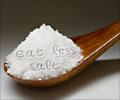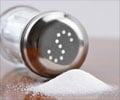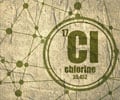Despite counseling by physicians, Americans still consume far too much sodium, putting them at risk for high blood pressure, heart disease and stroke, according to a new study.
Americans consume far too much sodium, putting them at risk for high blood pressure, heart disease and stroke, according to a new study published in the current issue of the American Journal of Preventive Medicine.
Although people who already have high blood pressure, or hypertension, generally consume less sodium than others, their average daily intake is still far higher than recommended levels, according to lead researcher Umed Ajani, an epidemiologist with the National Center for Chronic Disease Prevention and Promotion.Ajani and colleagues analyzed data collected in 1999 and 2000 from a random sample of more than 4,000 Americans who were part of a regular government health survey. They found that 42 percent of those surveyed had high blood pressure. Incidence of high blood pressure is usually about one-third for an average group, Ajani said.
“Perhaps the most striking finding is that no difference in sodium intake was observed between those who received advice … and those who did not,” Ajani said.
Participants’ sodium intake was computed from what they reported having eaten and drunk during the 24 hours before their interview.
People with hypertension took in 3,330 mg of sodium a day and people without hypertension consumed 3,600 mg a day, far more than the 2,400 mg maximum recommended by the American Heart Association and other groups.
Survey participants were also asked if their doctors had ever advised them about dietary sodium. There was no difference in sodium intake between patients advised about sodium consumption and those who were not.
Advertisement
A widespread misconception exists that salt content and sodium content are synonymous, Adjani said, and people may need to be told that foods that do not taste salty can still contain high levels of sodium.
Advertisement
“People will have to be motivated for behavioral change, providers will have to take greater responsibility for educating and monitoring patients and organizations will need to develop and provide better and more effective tools and interventions,” Ajani said.
Ajani AU, et al. Sodium intake among people with normal and high blood pressure. American Journal of Preventive Medicine 29(4,supp), 2005
(Source:Newswire).









